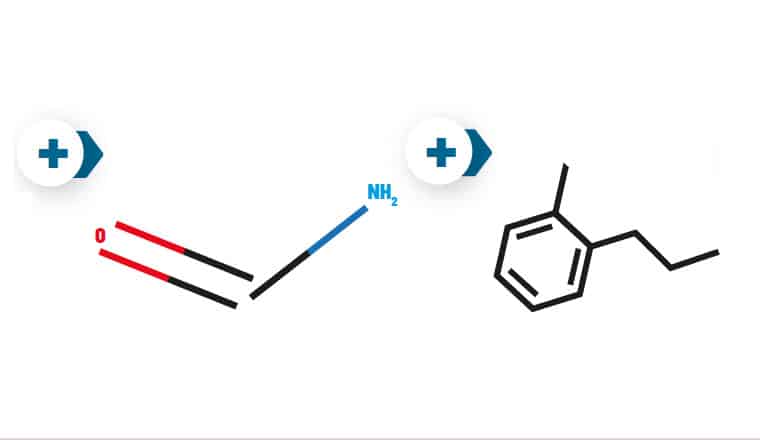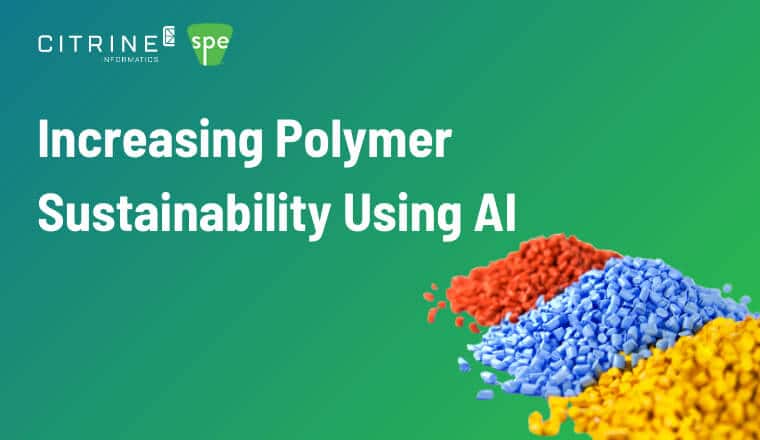Executive Summary
In 5 months:
- Predicted thermal property for > 2500 novel polymers
- AI-driven workflow created to enable the identification of new polymers likely to hit performance target

The Challenge
Consumers are asking for green products and suppliers are offering new green ingredients. Our customer needed to find out if they can use these new ingredients to make a polymer that still meets thermal property targets. They needed to do that as quickly as possible.
Designing new polymers and optimizing their properties requires costly and time-consuming simulations followed by synthesis and testing. The customer wanted to reduce the number of experiments needed to find new polymers with target thermal properties. This would both reduce the company’s costs but also enable them to become more agile in responding to market conditions and customer requests.
The task was therefore to screen potential polymers based on their predicted thermal property X.
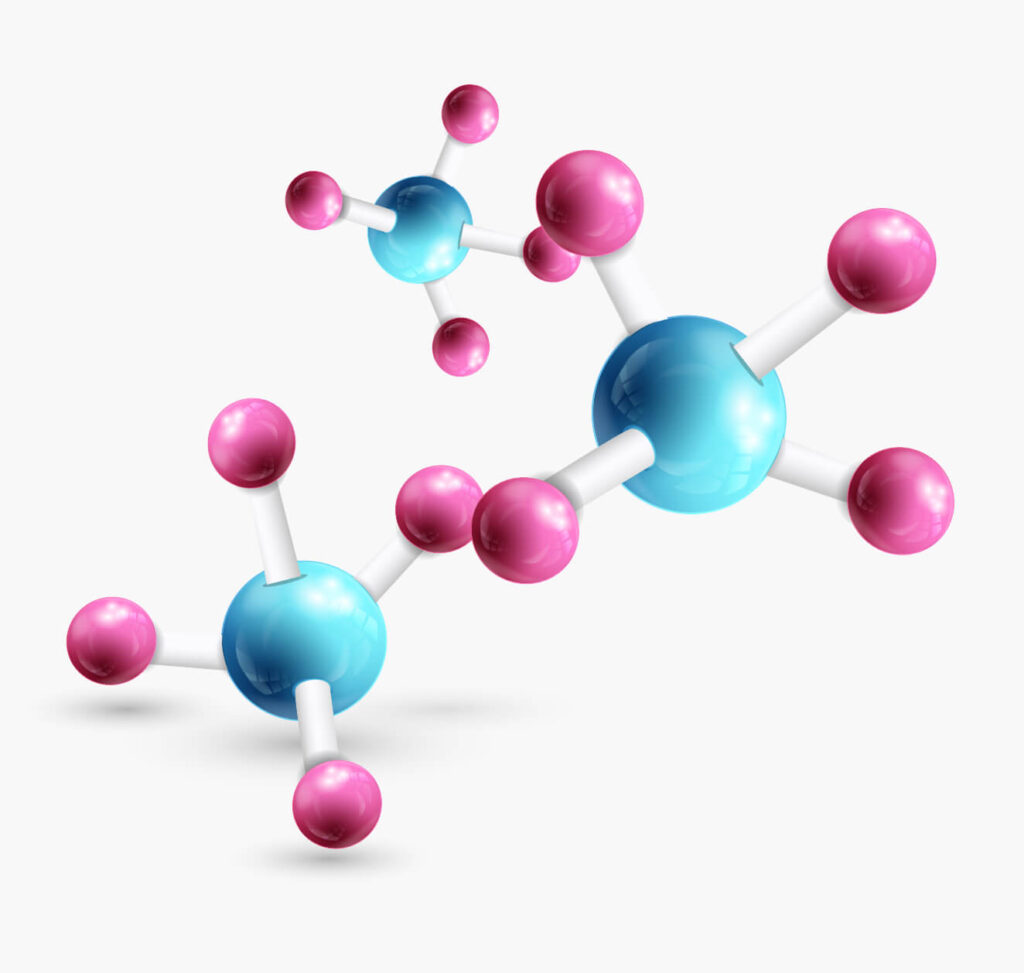

The Approach

Step 1: Ingest Data
The Citrine team ingested formula and thermal property data for 100 polymers. Transfer learning was used to supplement this data with related data from 3000 small molecules.
Step 2: Define Input Features
The customer’s deep understanding of the mechanisms affecting the polymer’s thermal properties was leveraged to structure the database and AI models.
SMILES1 notation was used to represent polymer chemistry as machine learning-ready data. The Citrine Platform has a library of descriptors developed specifically for Materials and Chemicals data that converts information (e.g. a chemical formula) into related numerical features (e.g., Atomic Polarizability).

1 Weininger D (February 1988). “SMILES, a chemical language and information system. 1. Introduction to methodology and encoding rules”. Journal of Chemical Information and Computer Sciences. 28 (1): 31–6. doi:10.1021/ci00057a005.
Step 3: Generate the Search Space
The customer was interested in designing entirely new polymers from promising building blocks. They provided Citrine with a set of monomers that they were particularly interested in and which could be combined in any permutation. The Citrine Platform then programmatically generated a list of more than 2000 polymers to screen. The customer added approximately 400 more polymers that they found interesting. They also added 40 polymers with known (previously measured) values of property X which could be used to validate the model.

Step 4: Generate the AI model
The customer team and Citrine team worked together to create and iterate upon a hierarchical AI model to predict thermal property X. Three different underlying mechanisms affect the thermal property and are represented in the AI model. Which of these three mechanisms has the most effect depends on certain features of the polymer being modelled, including which monomers are used. Different polymer types would therefore be modeled better by different routes through the hierarchical model. The platform predicted properties based on the route through the model with the highest accuracy for any given candidate.
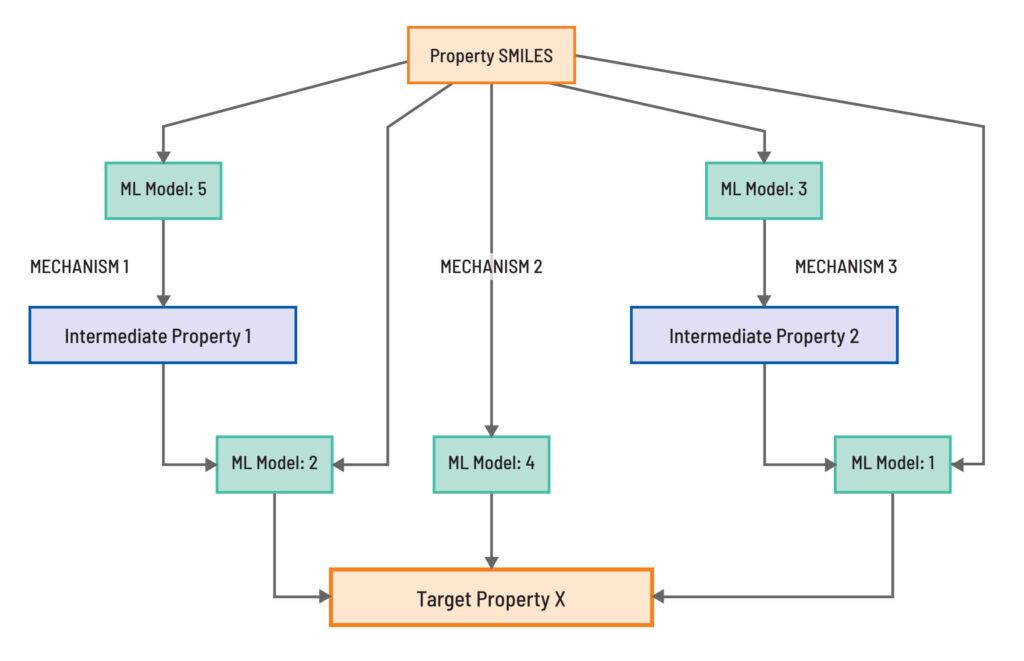

The Results
After just 5 months, the team had designed 2000 new polymers de novo and had an AI model ready to validate. They compared measured and predicted values of target property X for the validation set. The accuracy of the current lab method of measuring Property X is ± 20 units. The diagram below compares the median predicted and measured values while also showing the estimated accuracy of the predictions.
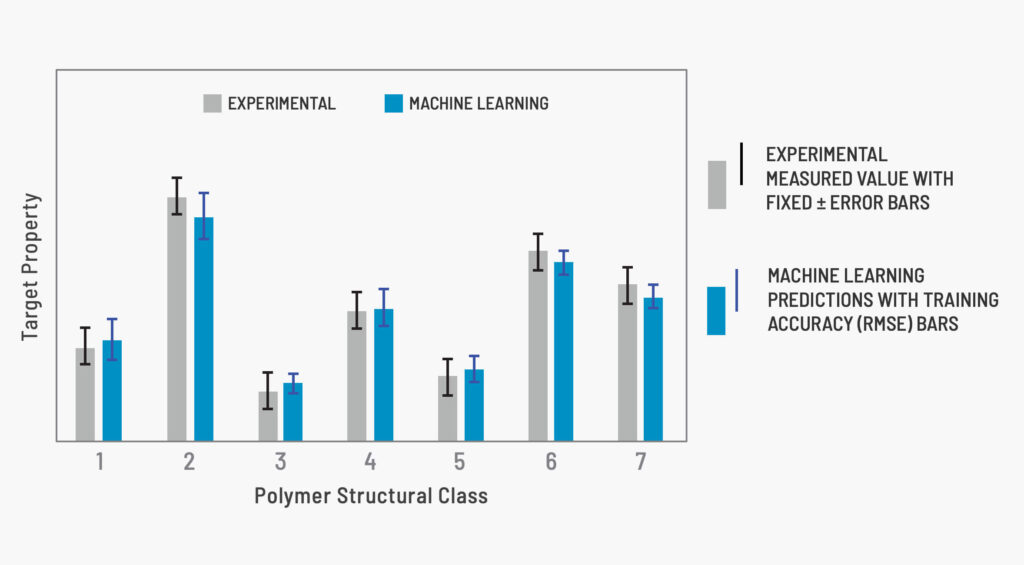
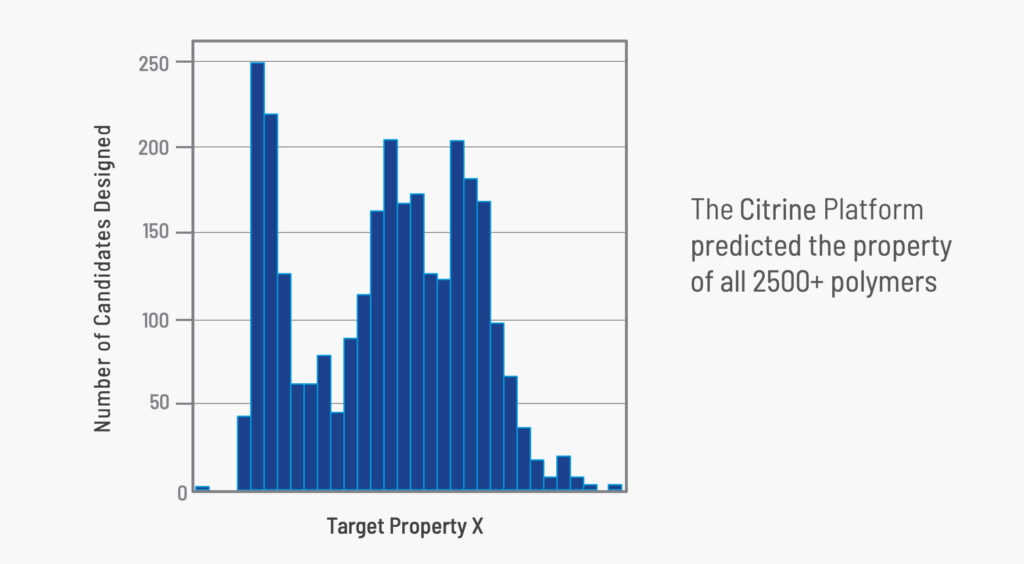

The customer can now set a target thermal property X and the Platform can list the candidate polymers that have the highest chance of meeting the target. The customer had a particular target in mind and the Citrine Platform delivered a list of the top ten candidate polymers to meet that target. No physical experiments or simulation has been done up to this point. The customer team can now focus their efforts in the lab on these 10 promising candidates rather than starting to churn through a long list, based on scientific hunches.
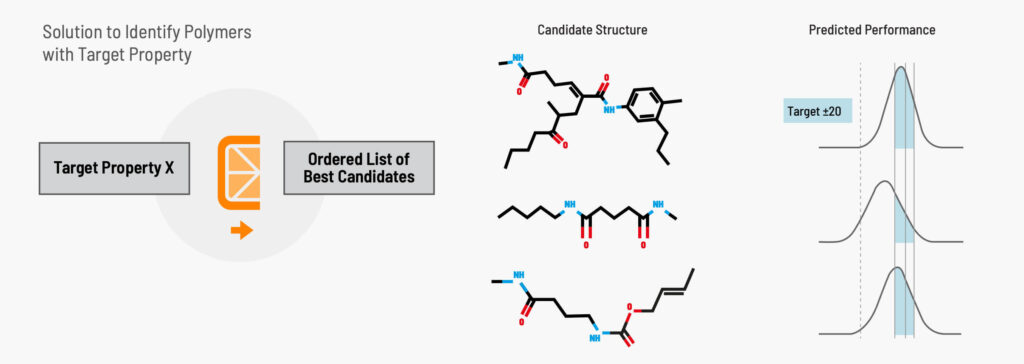
Next Steps and Future Work
The customer now has a turnkey solution to identify polymers with target thermal property X. Their team has seen how quickly AI models can be generated and refined through iteration and are keen to tackle other materials properties. In this way they can improve the agility of their R&D efforts and increase internal and external customer responsiveness.
The Citrine Platform uses a modular graphical model so that components can be reused by future projects. Should the downstream customer requirements change, or a separate end-customer(s) request a similar product with different requirements or trade-offs, the machine-learning model could be quickly adapted to new target properties.
